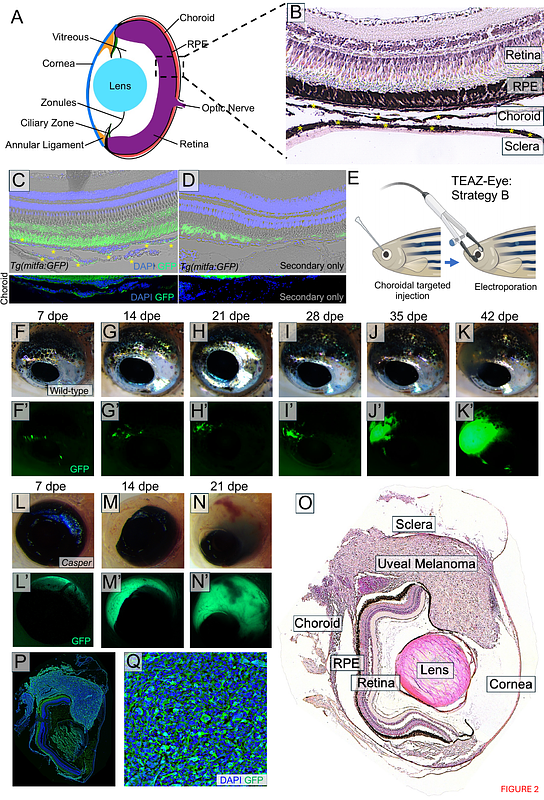MITF-Independent Melanocyte Progenitors are Highly Susceptible to GNAQ-induced Uveal Melanoma in Adult Zebrafish

MITF-Independent Melanocyte Progenitors are Highly Susceptible to GNAQ-induced Uveal Melanoma in Adult Zebrafish
Yevdash, J. I.; Moore, R.; Li, Z.; Campbell-Hanson, K. R.; Robinson, D.; Gutelius, D.; Moore, S. P. G.; Friend, D.; O'Toole, I.; Cornell, R. A.; Lang, D.; Weigel, R. J.; Kenny, C.
AbstractMelanocytes reside in diverse microenvironments that influence their susceptibility to oncogenic transformation, however, studying rare melanoma subsets has been hindered by the lack of suitable animal models. We developed a primary, immune-competent zebrafish model to study uveal melanoma (UM), utilizing choroidal-targeted injection and electroporation of plasmids containing human GNAQQ209L and CRISPR/Cas9 cassettes for tumor suppressor gene deletion. Single-cell transcriptional profiling of genetically identical eye- and skin-derived tumors revealed distinct oncogenic pathways, highlighting the importance of studying melanoma subtypes in their correct anatomical context. Additionally, we identified a population of tfec- and pax3a-expressing melanocyte progenitor cells in mitfa-deficient embryos and adult zebrafish eyes, which were highly susceptible to GNAQ-driven transformation. While previous studies have linked mitfa deficiency to accelerated UM onset, our findings suggest that an expanded progenitor population in mitfa-deficient animals drives this susceptibility. Our study establishes a critical role for MITF-independent melanocyte progenitors in UM pathogenesis.